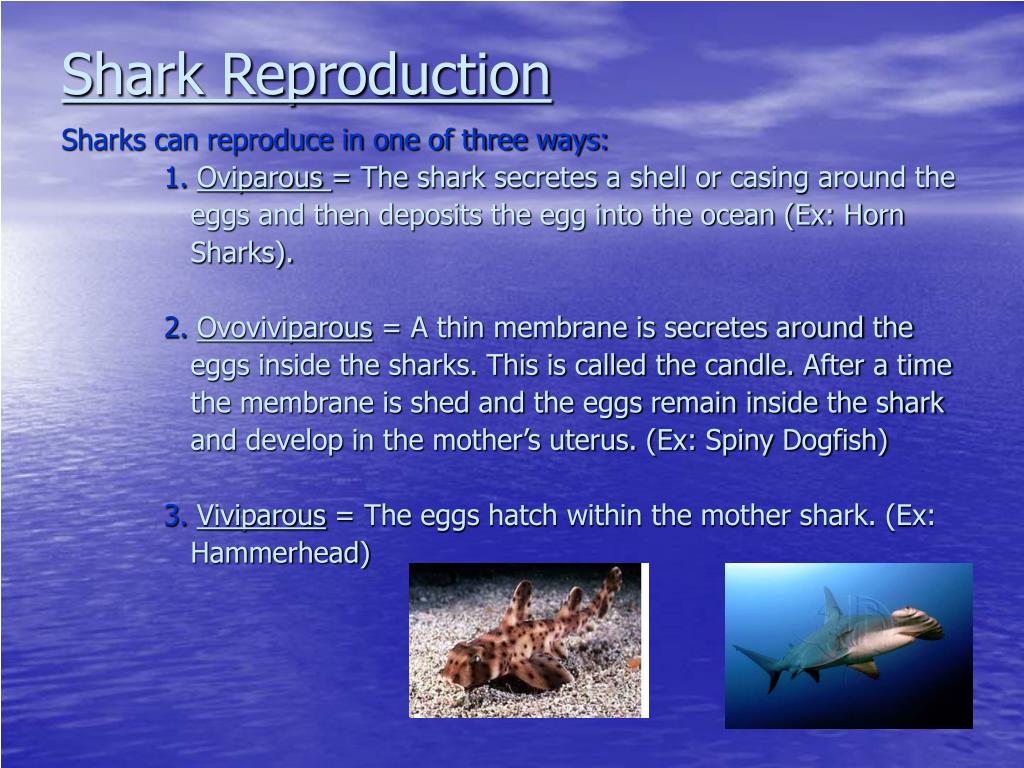

The egg sac is described as being like a leathery purse - and this is why they are commonly called a ‘mermaid’s purse’. Depending on the species of shark, the female will lay anywhere between 10 and 200 eggs. The eggs will stay in the mother for usually a few weeks before it is laid, and she may take a while actually laying them to ensure that they are secured before leaving. So, the eggs are fertilised inside the female’s oviduct, and then the egg sac is laid somewhere. The difference is that the eggs are fertilised internally (this is what makes them ‘true’). They are oviparous, however they are known as specifically true oviparous. About 40% of sharks reproduce similarly to other fish, but not the exact same. Biting is also somewhat of a courtship ritual used for expressing interest in mating.Īlthough all sharks take part in internal fertilisation, they tend to branch out when it comes to laying eggs/giving birth. A lot of males are seen to also bite the female in various places to keep himself attached. Many species of sharks are observed to have hooks or spines to keep males further secured to the female. The male will insert one of his claspers into the female’s cloaca - the clasper will open like an umbrella to keep him anchored, and then the siphon contracts to expel the water and semen into her. The clasper has a specific orifice to siphon water into it.

The male begins by swimming alongside the female he intends to mate with and raising whichever clasper he chooses - usually the one opposite to the side the female is on. Although a male is able to use both of his 2 claspers, he will only use one at a time. This is actually an easy way to identify whether a shark is male or female - put simply a male will have claspers, a female will not. They are located on their underbellies, along the inner sides of their pelvic fin. Claspers are intromittent, which just means that they are external and used for the purpose of transporting sperm during copulation. Male sharks have 2 sex organs called claspers. To understand sharks’ reproduction tactics, it’s probably best that you’re familiar with their reproductive organs and how they use them. Some species like the Nurse shark may choose to mate multiple times, and others are able to store semen for up to 2 years! The female will choose her ideal mate when he expresses interest - on the flip side if she deems him unsuitable there is no doubt when she rejects the male. fighting, deep diving and even dancing together. Many species of shark like the Hammerhead or Great White will have complex mating rituals e.g. Mating rituals begin for sharks when the female is ready - she will release chemicals into the water to attract males to her. In fact, their breeding strategies are considered surprising, as it's practically unheard of for fish to breed the way sharks do. It’s ingrained into the survival instinct to reproduce and ensure that their genetics live on through offspring, and fish are the same! The majority of fish will lay eggs and have them fertilised externally, however sharks and rays are completely different (we’re going to focus on sharks in this blog). Reproduction is vital to a species’ survival, and you’d be surprised how many different ways there are to do it. This one will cover the topic of shark reproduction.

ZEBRA SHARK ASEXUAL REPRODUCTION SERIES
This is the third in our series of 'I want to know about.' blogs.


 0 kommentar(er)
0 kommentar(er)
